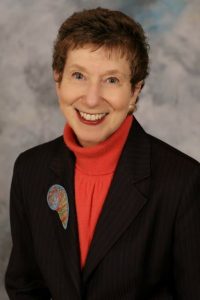 What is the role of the public library in fostering STEM (Science, Technology, Engineering, and Math) learning? Does every librarian need to be a STEM expert? What are some exciting current library-based STEM programs? How are librarians rethinking the configuration of their library spaces for responsive and engaging STEM activities in this era of e-books and expanding digital connections? Who are likely, but possibly under-used, partners for effective STEM library programs? How do we define “success” in out-of-school STEM learning settings? Finally, as we understand that STEM Learning is Everywhere (according to a recent National Research Council report), occurring throughout our lifetimes in multiple settings that include but are not limited to the classroom, how do we align and connect learning opportunities to foster a strong and effective learning STEM ecosystem?
What is the role of the public library in fostering STEM (Science, Technology, Engineering, and Math) learning? Does every librarian need to be a STEM expert? What are some exciting current library-based STEM programs? How are librarians rethinking the configuration of their library spaces for responsive and engaging STEM activities in this era of e-books and expanding digital connections? Who are likely, but possibly under-used, partners for effective STEM library programs? How do we define “success” in out-of-school STEM learning settings? Finally, as we understand that STEM Learning is Everywhere (according to a recent National Research Council report), occurring throughout our lifetimes in multiple settings that include but are not limited to the classroom, how do we align and connect learning opportunities to foster a strong and effective learning STEM ecosystem?
These and many other questions were debated and discussed at Public Libraries & STEM: A National Conference on Current Trends and Future Directions, a recent national conference organized by the National Center for Interactive Learning of the Space Science Institute in Boulder, Colorado, and funded by the National Science Foundation. Librarians from around the country attended (including heads of state library agencies and university-based library and information science faculty), science center professionals, scholars, researchers, funders, and representatives from federal agencies, including the Department of Education, the Institute of Museum and Library Services (IMLS), and the National Science Foundation.
Conference sessions were organized around five topics, from “21st Century Visions of STEM Learning in Public Libraries,” to case studies and models of current STEM programming and collaborations, strategies for reaching “groups underrepresented in STEM fields,” and “Building a Foundation for Evaluation and Research for STEM Learning in Public Libraries.”
Working from a series of provocative background papers and other resources, conference participants also brought posters representing their current STEM-related projects, heard from researchers and practitioners, and engaged in a series of plenary and breakout sessions that identified opportunities as well as barriers for librarians wanting to play a role in fulfilling an inclusive, community-wide vision of STEM learning.
Librarians were characterized as connectors, facilitators, relationship-builders and “knitters of community,” with libraries described as “safe places to access dangerous ideas.” Speakers shared the recommendations from a 2014 Aspen Institute report,Rising to the Challenge: Re-Envisioning Public Libraries, which proposes a future vision of the library leveraging its roles as people, place, and platform and suggests strategies for alignment with community needs, leadership development, and broad, multi-platform access to content.
Throughout, we were reminded that public libraries are core institutions of our democracy. Participants noted that many of our current social and public policy challenges–and real and current community problems – have implications or solutions rooted in science and technology. Libraries have a responsibility to serve as forums for civic engagement for these issues. If librarians cannot (and probably shouldn’t) be STEM experts, they can partner with those in the community who are. Further, librarians promote literacy, and their proficiency in this area can be leveraged in order to develop literacy in other content areas, including STEM (and STEAM -Science, Technology, Engineering, Art, and Math).
Additional conference sessions shared research on the primacy of curiosity, interest, and motivation in effective learning and linked these insights to the explosion of library makerspaces and learning labs, where libraries have become ‘drop in’ places for youth-generated STEM production and community building. Finally, we explored a current trend that re-invents evaluation as a participatory, iterative, and continuous learning and improvement process—for individuals and organizations.
More information on the meeting, including resources, can be found here. In coming weeks, conference organizers will post additional materials from the meeting on various online platforms.
Written by, Marsha Semmel
Senior Advisor, SENCER-ISE
